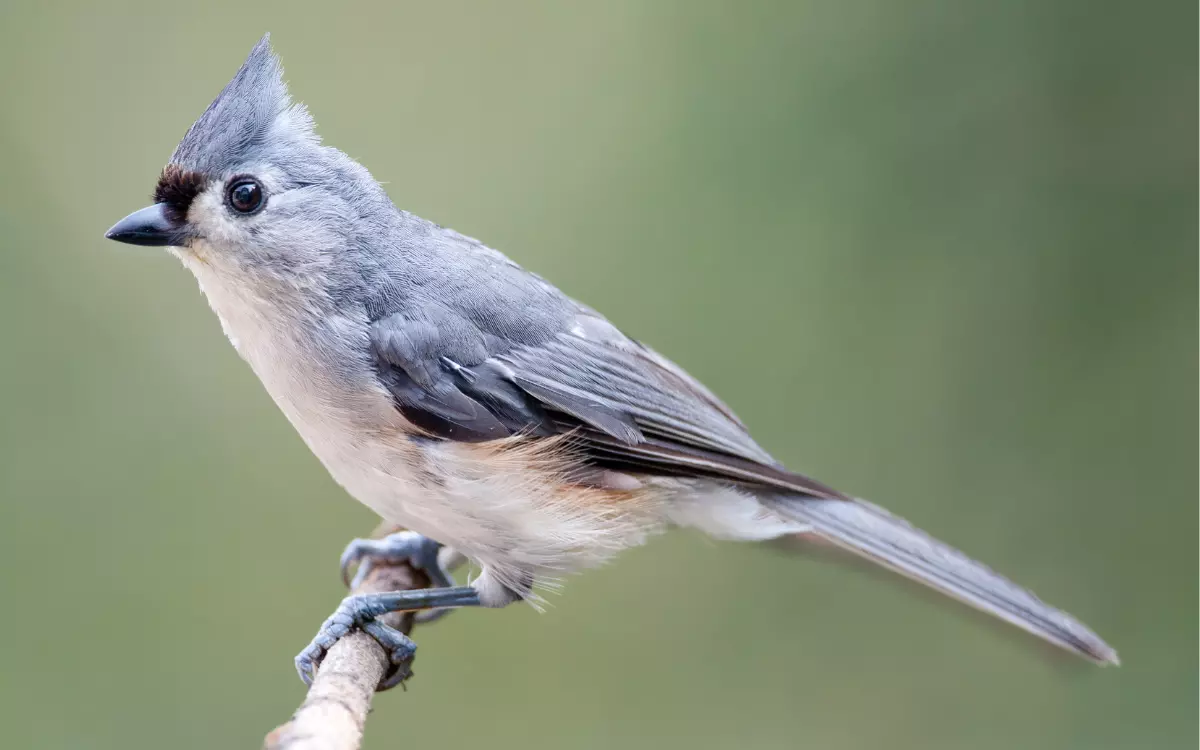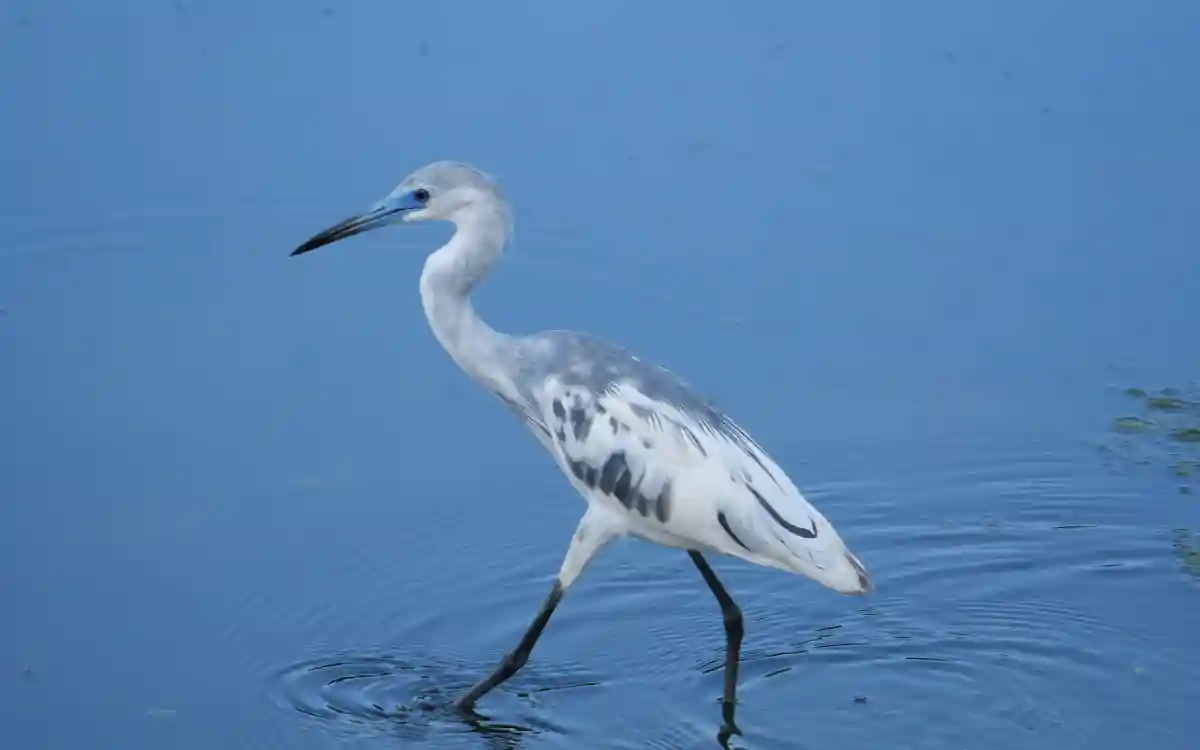14 Yellow Birds in Connecticut: Identification
Connecticut is home to a surprising variety of yellow birds. Some of them stay year-round, brightening up winter feeders, while others pass through only during migration. A few are backyard regulars you might see every week, while others take patience and luck to spot in the state’s forests, wetlands, and open fields.
This guide is designed to help you recognize these birds, understand when and where you can find them, and enjoy them more whether you’re birdwatching in the wild or from your own backyard. Instead of giving you a simple list, the species here are grouped by how common they are in Connecticut, making it easier to know what you’re most likely to see.
Backyard Regulars in Connecticut
1.American Goldfinch

The American Goldfinch is the yellow bird most people know and love in Connecticut. Males glow a bright lemon yellow during the summer months, while females are softer in tone. In winter, both sexes turn a duller olive color, which makes them less eye-catching but still easy to recognize. These little finches are seen year-round and are strongly attracted to nyjer seed and sunflower feeders.
2.Baltimore Oriole
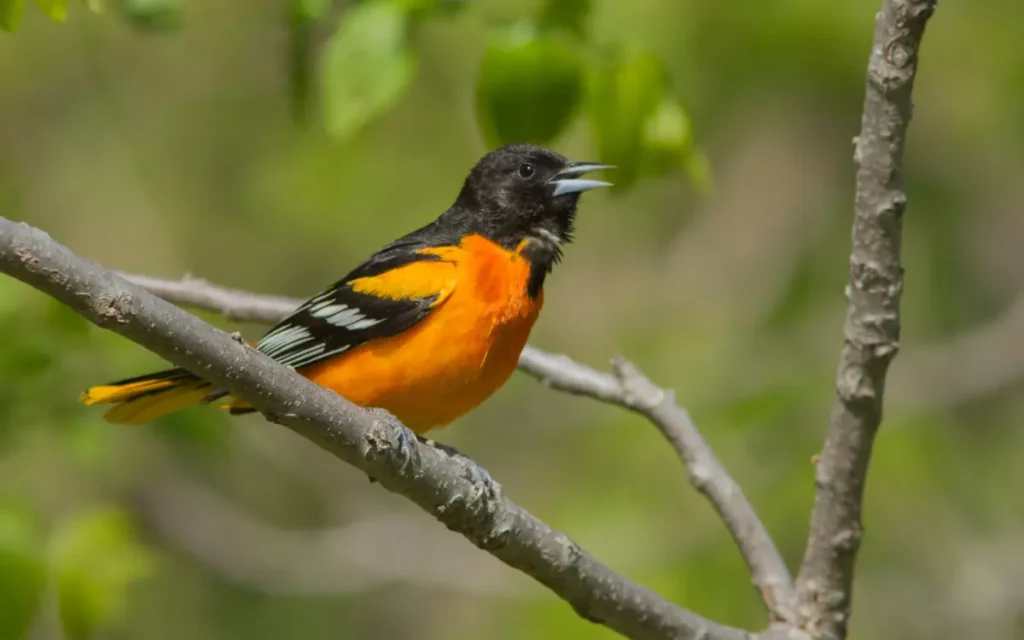
Few birds match the striking look of the Baltimore Oriole. With its orange-yellow belly and sharp black head, it stands out immediately. Orioles spend spring and summer in Connecticut, often in tall shade trees near rivers or large backyards. If you want to attract them, oranges and grape jelly work wonders.
3.Cedar Waxwing
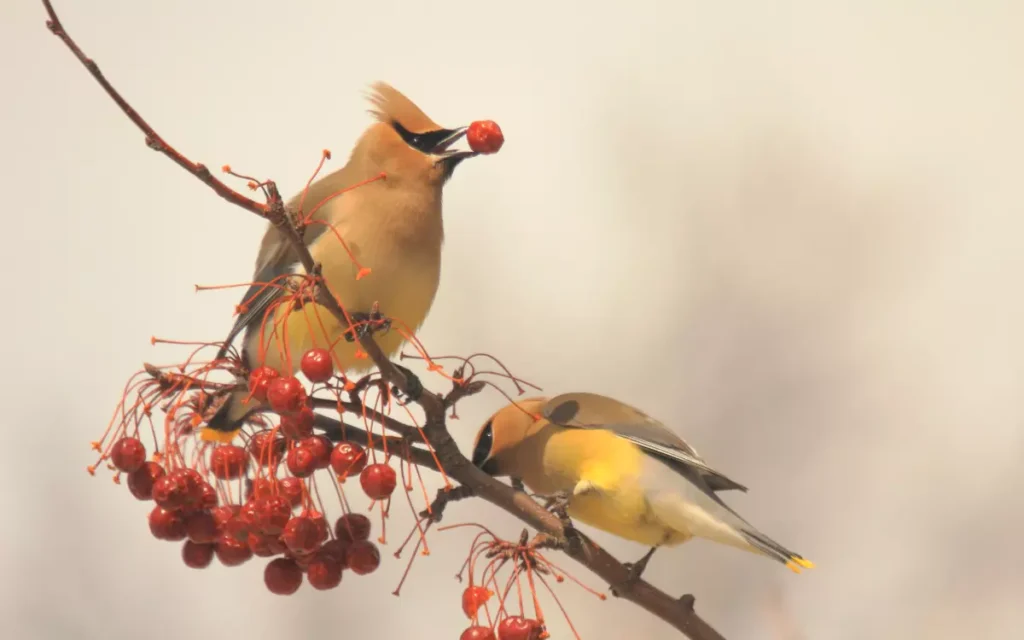
Cedar Waxwings are sleek, social birds with silky plumage and a soft yellow belly. They often appear in flocks, especially in late summer and fall when berries are plentiful. Their high-pitched, almost whisper-like calls are often the first clue that a flock is nearby.
4.Eastern Meadowlark
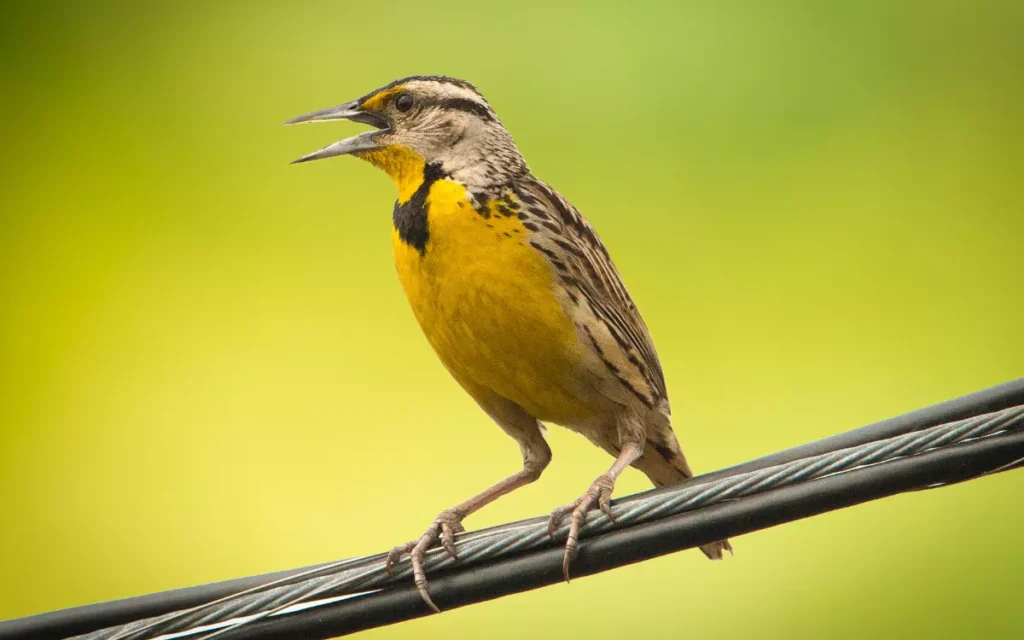
The Eastern Meadowlark looks like a bird built for open fields. Its bold black “V” across a yellow chest makes it easy to identify when it perches on fence posts or tall grasses. Meadowlarks are more often heard than seen, with a flute-like whistle that drifts across farmland in spring and summer.
Warblers
5.Yellow Warbler

As its name suggests, the Yellow Warbler is golden from head to tail, sometimes with faint reddish streaks across the chest. These cheerful birds arrive in late spring and breed in wetlands, shrubby thickets, and along streams. They are one of the easiest warblers to identify.
6.Common Yellowthroat

This small, energetic warbler has a bright yellow throat and belly, with males sporting a black “bandit mask.” They favor marshes and damp areas with dense cover. If you walk near wetlands in summer, their “witchety-witchety” song is often heard before they are seen.
7.Prairie Warbler
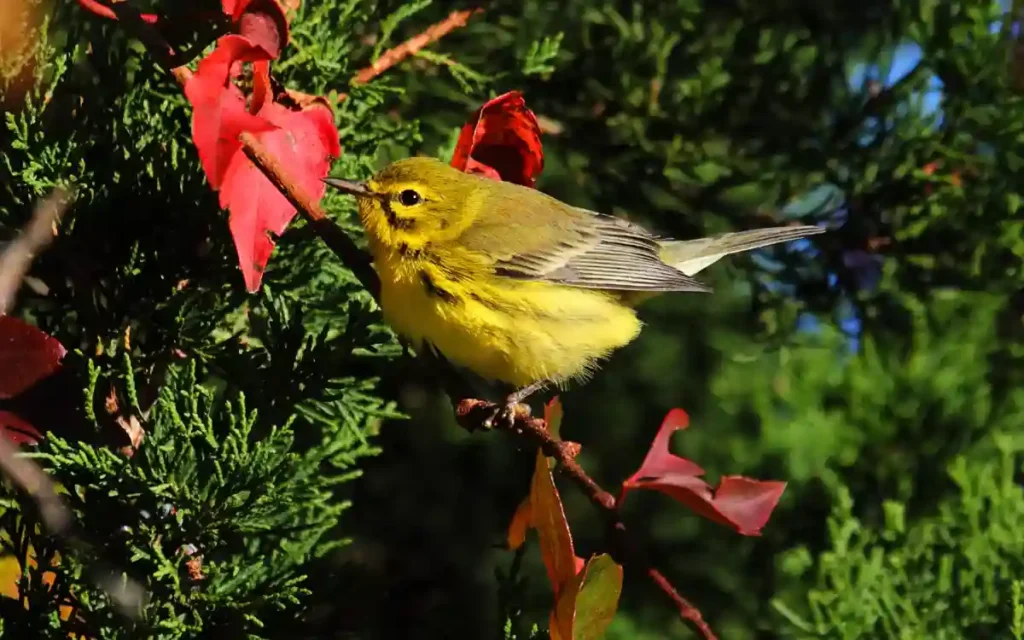
Prairie Warblers prefer young forests, scrubby hillsides, and pine barrens in Connecticut. Their song rises in a series of buzzy notes, and their yellow plumage with dark streaks makes them distinct. Unlike the Yellow Warbler, they are more specialized in their habitat choices.
8.Pine Warbler

True to its name, the Pine Warbler spends most of its time high in pine trees. It has an olive-yellow coloring and a gentle trill that carries through the woods. Unlike many other warblers, Pine Warblers can be found in Connecticut year-round.
9.Northern Parula
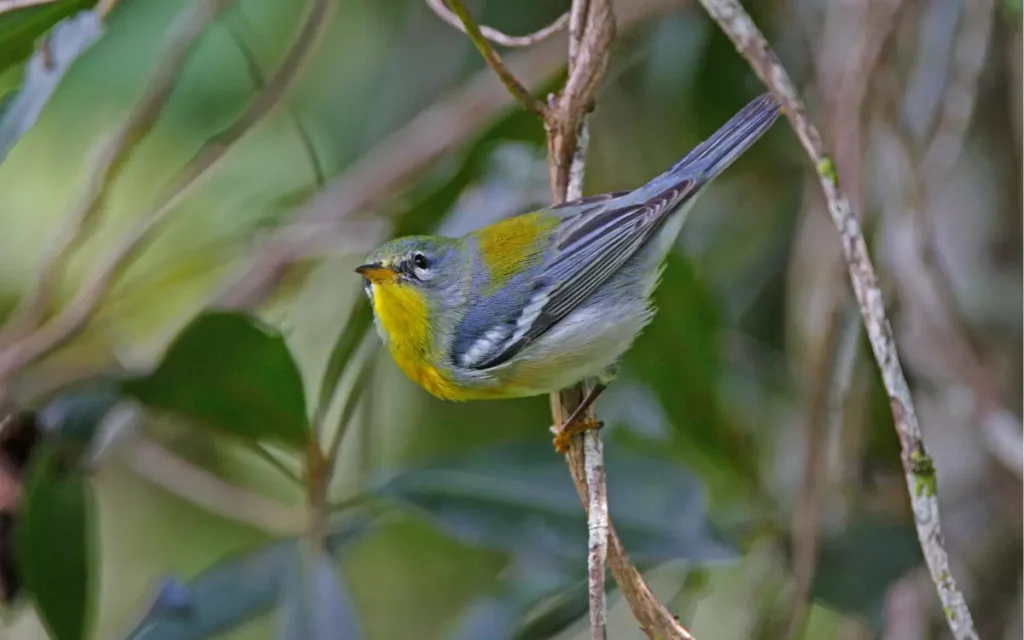
The Northern Parula is smaller than most warblers, but its combination of a yellow chest and bluish upperparts is beautiful. These birds are migrants, often passing through Connecticut forests in spring and again in fall. They are quick movers, making them a challenge to follow.
Rarer Visitors Worth Watching For
10.Prothonotary Warbler
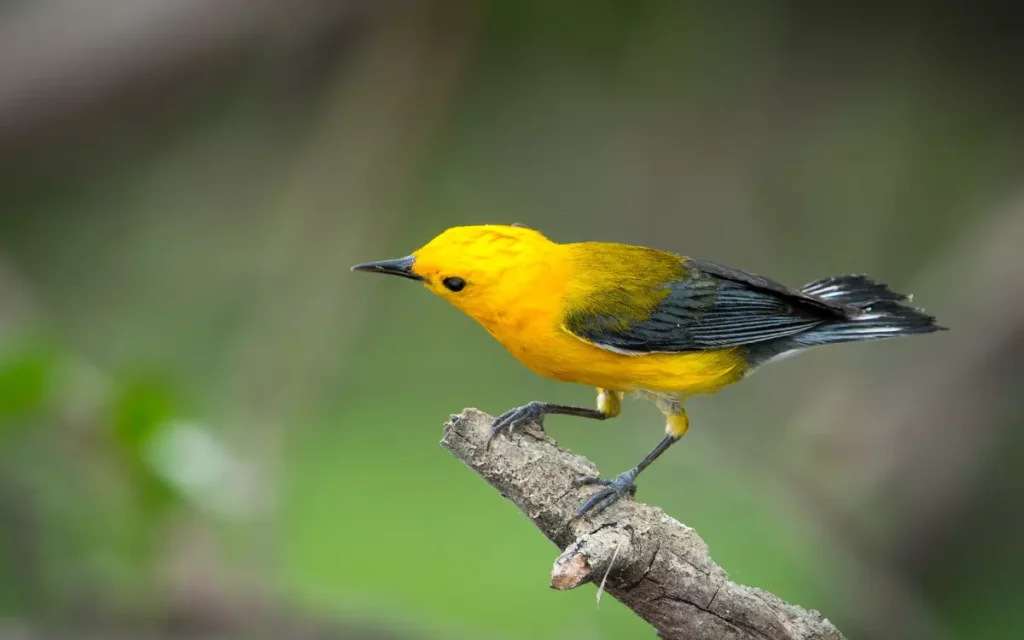
This bird shines like a piece of gold with its bright golden head and chest. In Connecticut, it’s more likely seen during migration in wooded wetlands, where it feeds along water edges. Spotting one here is always a treat for birders.
11.Hooded Warbler
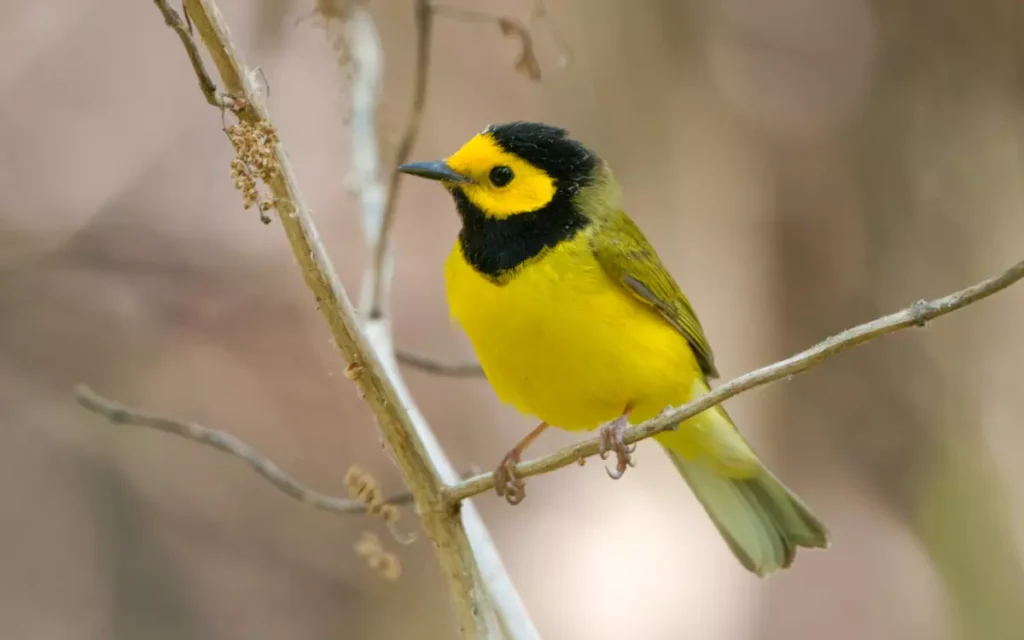
The Hooded Warbler is hard to miss when you do see it—males wear a bold black hood around a glowing yellow face. These warblers are mostly found in the southern parts of Connecticut, favoring dense understory growth in woodlands.
12.Orchard Oriole
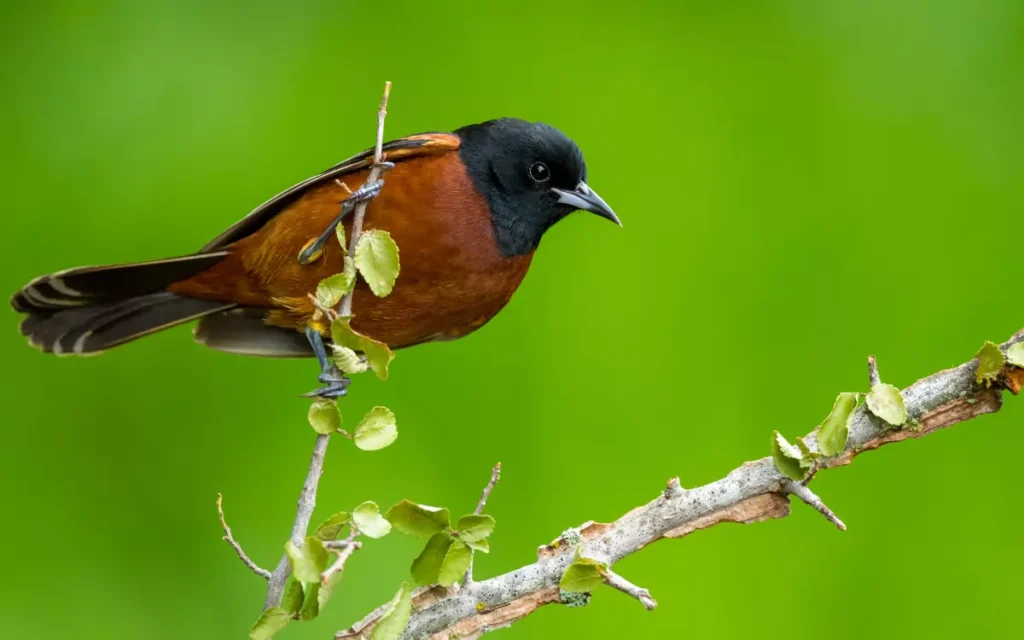
Unlike the Baltimore Oriole, the female Orchard Oriole appears more yellow-green than orange. They are less common but can be spotted in orchards, parks, and riverside trees. Because of their coloring, many birdwatchers mistake them for another species at first glance.
13.Scarlet Tanager (Female)

Scarlet Tanagers are well known for the males’ fiery red plumage, but the females are olive-yellow. They nest in mature forests across Connecticut during summer. Their rich, robin-like song makes them easier to notice even when they stay high in the canopy.
14.Yellow-bellied Sapsucker
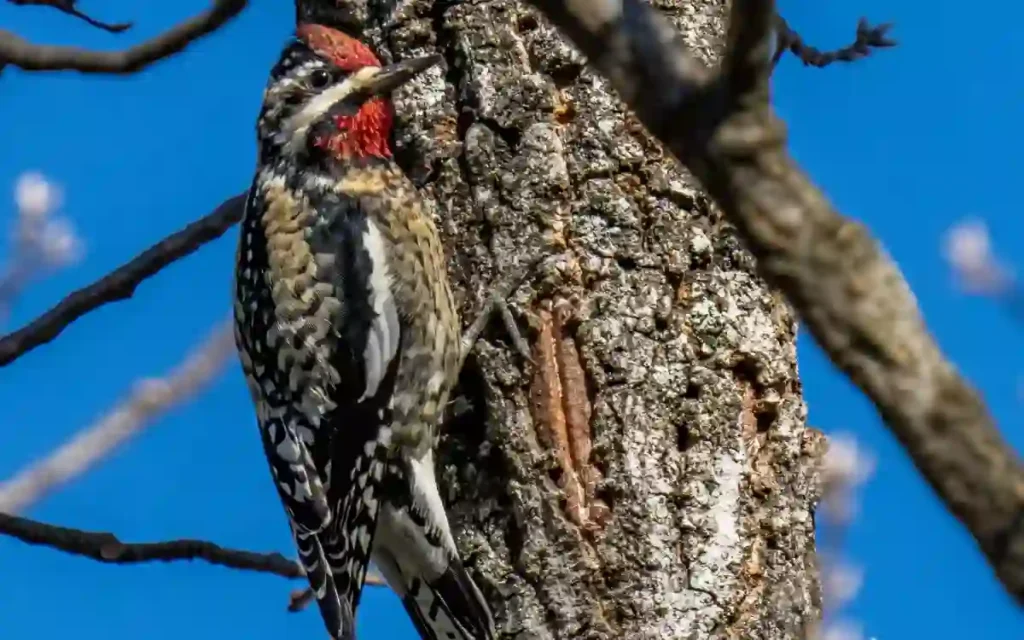
This woodpecker is not as bright as a goldfinch but has a noticeable yellow wash on its belly. It drills neat rows of holes in trees to feed on sap, leaving a calling card that many birders recognize before the bird itself is seen. Sapsuckers are seen in Connecticut during migration.
Seasons of Yellow in Connecticut
Spring is the best season for spotting warblers, as many migrate through the state at once. By early summer, orioles, meadowlarks, and breeding warblers are busy with nesting. Late summer and fall bring flocks of Cedar Waxwings gathering at berry trees, while migrating warblers return south. In winter, the bright but subdued American Goldfinch remains a faithful splash of yellow in otherwise quiet backyards.
Where to See Yellow Birds in Connecticut
Birdwatchers in Connecticut are spoiled for choice. Hammonasset Beach State Park is one of the best migration hotspots, drawing warblers, orioles, and even rarities. The Connecticut River Valley is another excellent route during spring and fall migration. Sleeping Giant State Park offers a mix of forest species, including tanagers and warblers. And of course, backyards with nyjer feeders, native plants, and fruit trees are often enough to attract goldfinches, orioles, and waxwings.
Yellow Bird Comparison Guide
| Bird | Best Season | Habitat | Distinctive Feature |
| American Goldfinch | Year-round | Fields, feeders | Bright yellow summer plumage |
| Baltimore Oriole | Spring–Summer | Trees, parks | Orange-yellow belly |
| Cedar Waxwing | Summer–Fall | Berry trees, orchards | Sleek crest, flocking behavior |
| Prairie Warbler | Spring–Summer | Pine barrens, scrub | Yellow with dark streaks |
| Scarlet Tanager (Female) | Summer | Mature forests | Olive-yellow coloring |
FAQs
What is the most common yellow bird in Connecticut?
The American Goldfinch is the most widespread and easiest to attract, often seen year-round.
Which yellow birds visit Connecticut backyards?
Goldfinches, Baltimore Orioles, and Cedar Waxwings are the most common backyard visitors.
Do yellow warblers nest in Connecticut?
Yes, Yellow Warblers breed across the state, especially in wetlands and shrubby areas.
How can I tell a goldfinch from a warbler?
Goldfinches are seed eaters that stay through winter, while warblers are insect eaters that mostly migrate south.
Where is the best place to see yellow birds in Connecticut?
Hammonasset Beach State Park and the Connecticut River Valley are top spots, but backyards with the right food also bring plenty of activity.
Final Thoughts
Yellow birds bring warmth and brightness to Connecticut’s landscapes. Whether it’s the reliable goldfinch at your feeder, the sudden flash of a warbler on a migration trail, or the rare appearance of a Prothonotary Warbler in wetlands, each sighting adds color to the birdwatching experience. By knowing when and where to look, you’ll have a better chance of spotting these feathered highlights throughout the year.


